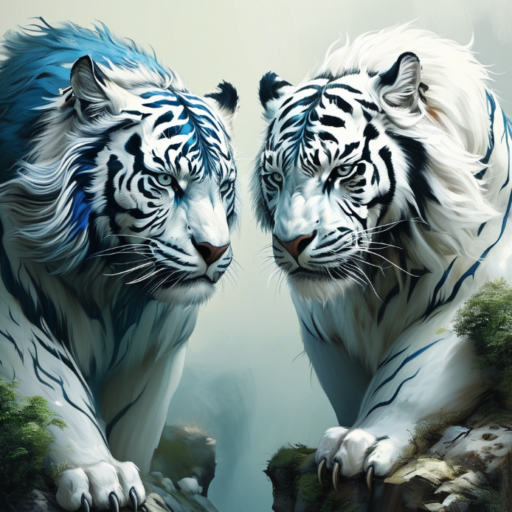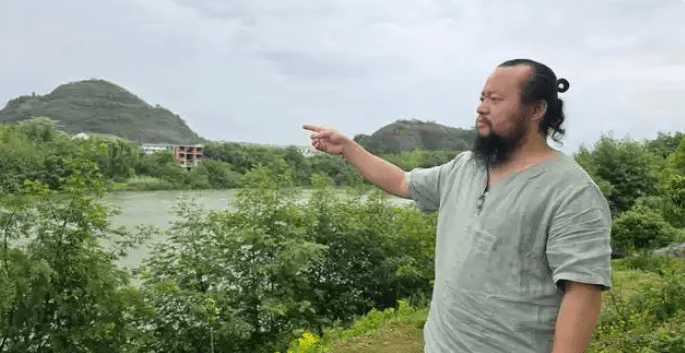In ancient China, the 28 lunar mansions were established, and these mansions were divided into four groups, with each group consisting of seven mansions. These four groups correspond to the stars in the four seasons of spring, summer, autumn, and winter. Each season is paired with an animal and a direction. Spring is associated with the east, and its spiritual creature is the “Azure Dragon”. The “Azure Dragon” represents the vitality of spring, the energy of all things growing. Its vigorous and lively nature is akin to the sprouting of plants in spring. Autumn, on the other hand, carries an atmosphere of desolation and killing. In ancient times, executions were often carried out in autumn, which was referred to as the autumnal execution. As autumn arrives, leaves turn yellow and fall from the trees. Thus, the “White Tiger” aptly symbolizes the desolation and killing aura of autumn. Autumn is paired with the west. The commonly mentioned “Azure Dragon on the left, White Tiger on the right” refers to the left and right positions, not the actual Azure Dragon and White Tiger.
In Feng Shui, what does “Zhuque” refer to?
Feng Shui regards the terrain in front of a residential building or the landscape of mountains and waters in front of a burial site as Zhuque. Feng Shui experts believe that if Zhuque is in the form of a mountain, it should be dignified, towering, lively, and beautiful, as if bowing and dancing towards the mountain with affection. The “Book of Burial” states: “Zhuque soars and dances… If Zhuque does not dance, it flies away.” The commentary explains: “The front mountain is tall, unique, lively, and beautiful, bowing and greeting with affection.” It also says: “If the front mountain turns its back without affection, with the upper part straight and the lower part slanted, following the water and stealing away, unwilling to circle and face the burial site, it seems to fly away.” If Zhuque is in the form of water, it should be winding and circling, like a hundred officials paying homage to the king. If it rushes and splashes away, it is an ominous sign.
In Feng Shui, what does “Xuanwu” refer to?
Feng Shui considers the mountain behind a burial site as “Xuanwu”. Guo Pu said in the “Book of Burial”: “For burial, the back is considered Xuanwu.” Xuanwu is also used to refer to the small hill behind a residential building. The “Ten Books of Yangzhai” states: “If there are hills behind a house, it is called Xuanwu.” Feng Shui practitioners believe that the Xuanwu mountain should bow its head, with the mountain slope gradually descending towards the burial site, welcoming the burial. Guo Pu said in the “Book of Burial”: “Xuanwu bows its head.” The commentary explains: “Bowing its head means that from the main peak, it gradually descends, as if to accept the burial, with the burial site being able to hold water without it flowing away and being stable enough to sit on, which is in accordance with the bowing head pattern. If water pours down and cannot be held, and one cannot stand firmly, it is a place of pouring and spilling.” The “Essence and Marrow” says: “When people sleep on the mountain, people can live there, and when water flows into the hall, the burial site is at peace. This is also the meaning of it.” In fact, in terms of Feng Shui, all of the Azure Dragon, White Tiger, Zhuque, and Xuanwu are required to face and bow, to embrace with affection; otherwise, they are inauspicious signs.
What kind of terrain is called “Shi Gui”?
“Shi Gui” is a term in Feng Shui used to refer to the ten auspicious shapes related to dragon, burial site, sand, and water. Feng Shui practitioners believe that places with these ten auspicious shapes are “noble sites”. The Nine Songs and Ten Decrees of Feng Shui describe the “Shi Gui” sites as follows: First, the Azure Dragon embraces on both sides; second, the dragon and tiger are towering; third, Chang’e is graceful and beautiful; fourth, the drum and flag are round and full; fifth, the inkstone is in front of the pen rack; sixth, the official’s robe covers the bell; seventh, the White Tiger is round and lively; eighth, the Azure Dragon’s brush stops; ninth, the screen wind runs on horseback; tenth, the water mouth is placed.




